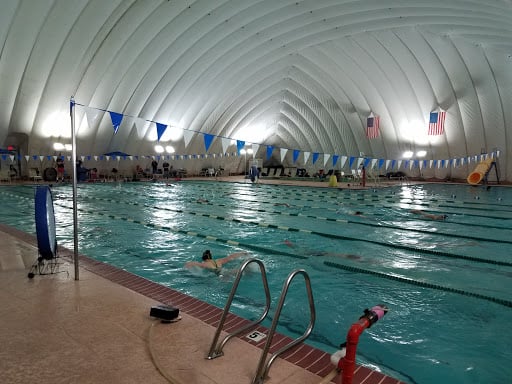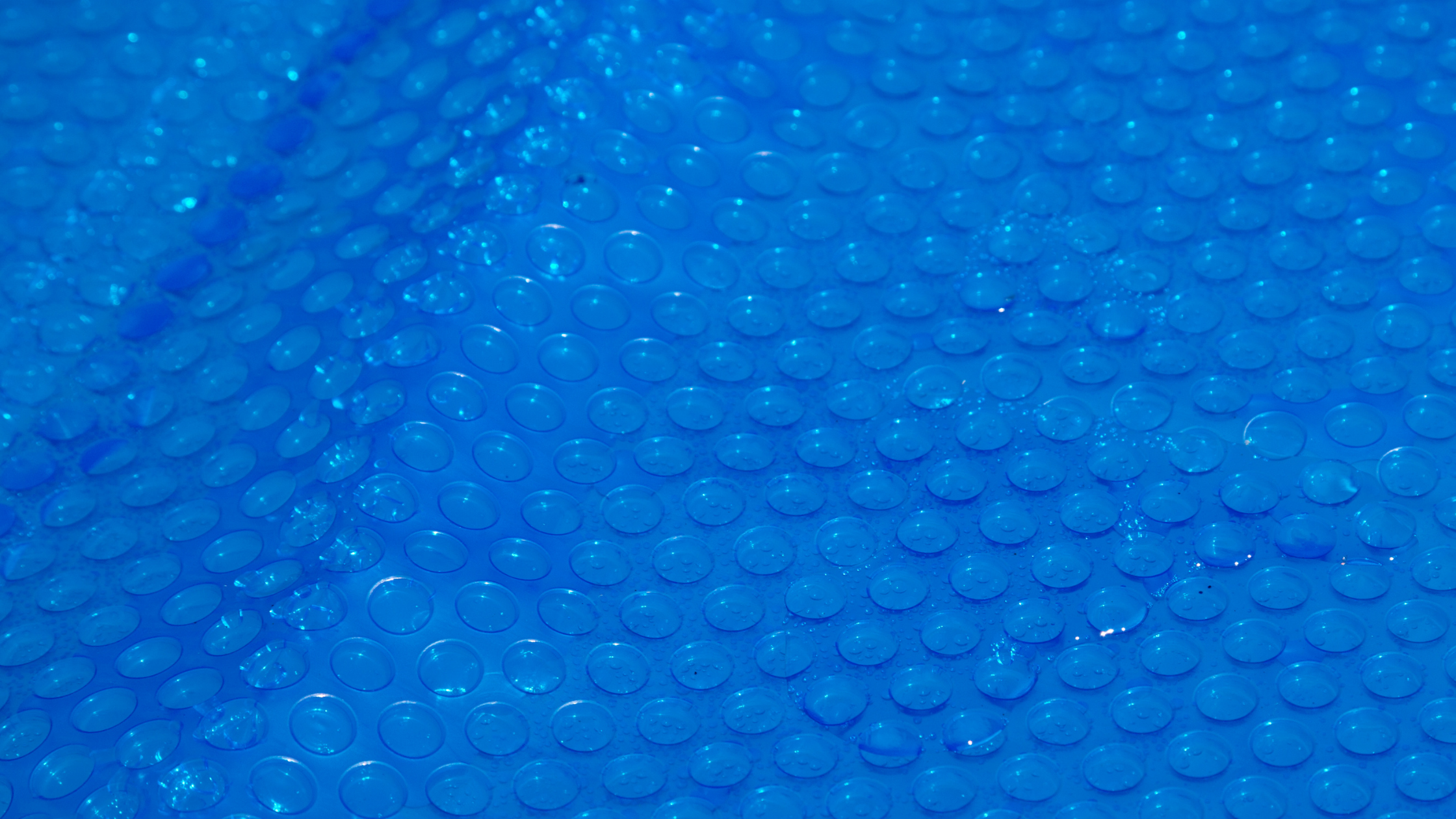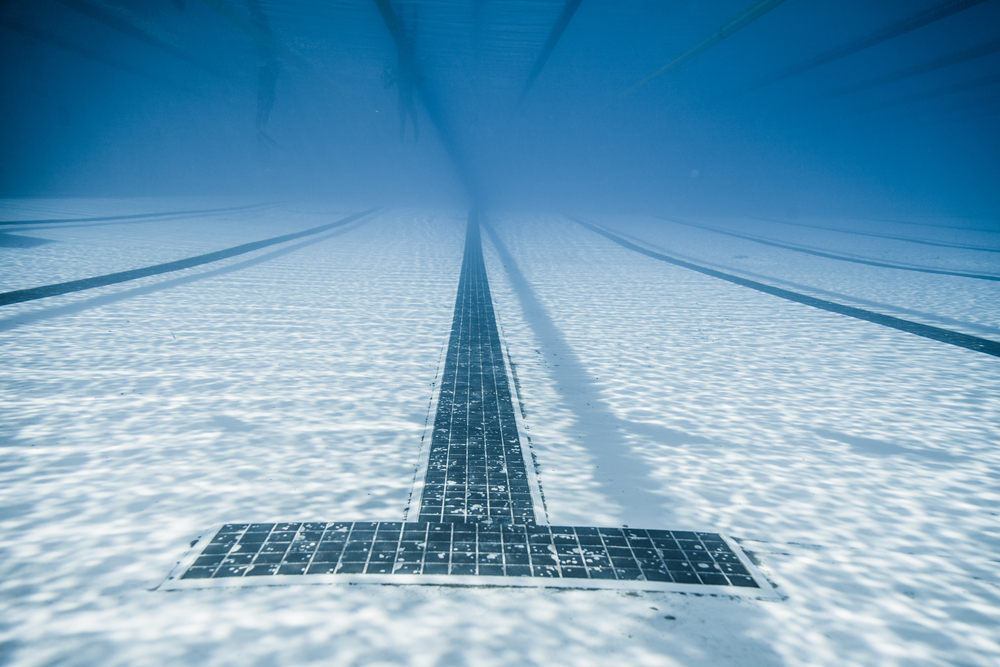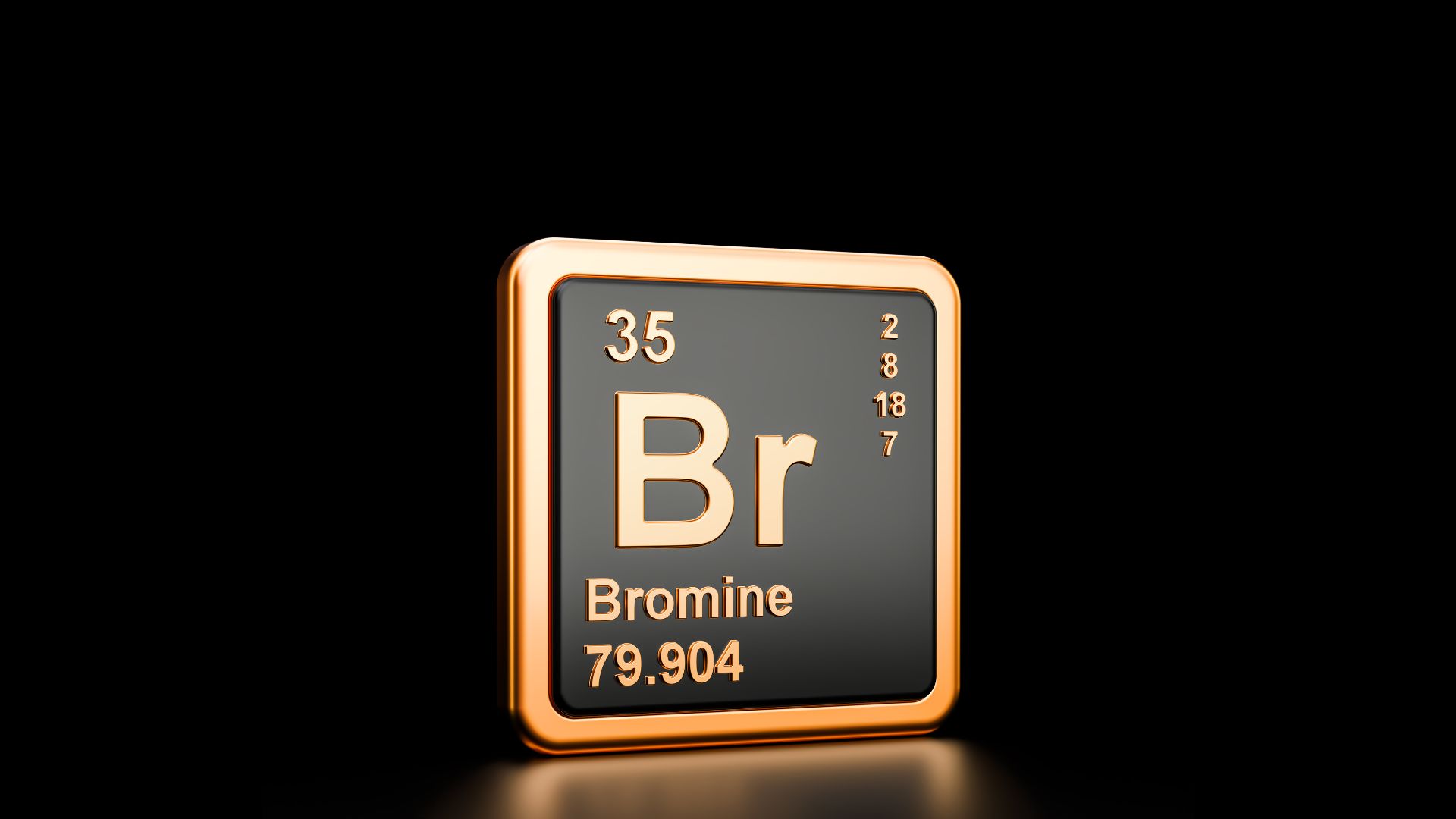Inflatable Pool Dome Air Quality
While most outdoor pools in cold areas get winterized and covered, some stay open year round. They do so by erecting an inflatable pool dome–more commonly called a pool bubble–over the entire pool and deck. It's an affordable way to keep a pool open for the winter, but it comes at a cost: bad air quality. Let's discuss why.
Outdoor pool bubble enclosures
Image: Quince Orchard Swim & Tennis Club
Pool bubble structures are supported entirely by positive air pressure. They require a robust air handling system to continuously blow conditioned air into the space, while exhausting less. This is an important distinction between bubble pools and traditional natatoriums, because natatoriums must be negatively pressured, whereas bubbles must be positively pressured. From an air quality and physics perspective, the difference is huge.
When air is positively pressured–like inside an inflatable pool dome–directional airflow is much harder to create and maintain. But one thing is certain: air will move toward escape points. Much like water in a cup with a hole in the bottom will move toward (and through) the leak point, air too wants to escape a pool bubble. But with new air constantly being introduced, the air that does escape is unfortunately just the air nearest the escape point. This rarely means air from throughout the bubble, which is why pool bubbles tend to have air stagnation problems.
Related: Swimming Pool Air Quality Resources
But hey, inflatable pool domes are temporary. So why worry so much about it?
Tell that to the swimmer getting sick every time they use the pool, or the coach who spends hours on end in that environment. We believe they deserve better air quality to breathe.
Trichloramines and Henry's Law
Henry's law of the solubility of gases basically states that gases dissolved in water will seek equilibrium with the air above the water. The most common example is with carbon dioxide, where CO2 off-gases because pool water has more CO2 than the air we breathe. Yes, that may surprise you, but CO2 is actually a very small percentage of the air we breathe, according to Sciencing.com.
As it pertains to the air quality inside any pool enclosure–be it a natatorium or an inflatable bubble enclosure over the pool–let's focus on noxious disinfection byproducts (DBPs) like trichloramine and chloroform (a trihalomethane). Thankfully, none of these DBP gases are naturally found in the air we breathe, which means the pool has more of them than the air above the water. Enter Henry's Law, and you have natural off-gassing of these harmful gases into the air. And yes, these DBPs are what create the "pool smell."
So that's why these gases come out of the water in the first place. The question we ask is whether or not positive air pressure in a pool bubble has any affect on the rate of off-gassing. We know for a fact that it does not stop the off-gassing, because air quality inside pool bubbles is abysmal almost anywhere you go. So we know for a fact that these gases are coming out of the pool. But what can we do to address them?
Options to improve IAQ in a bubble
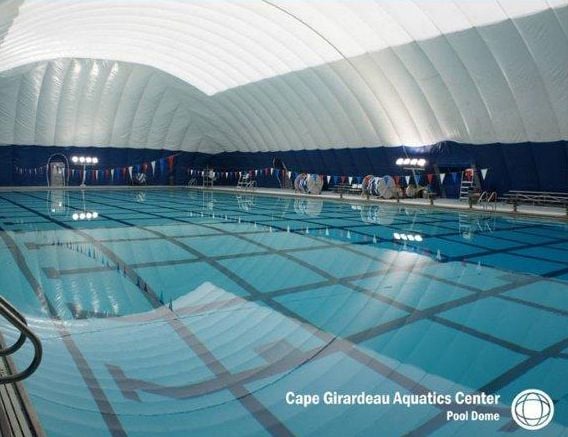
Image: Cape Girardeau Aquatics Center
Unlike natatoriums, as mentioned earlier, bubble pools are supported entirely by positive air pressure. This means there are virtually no options to manipulate airflow (most pool bubbles do not have supply ducts), and no options to change the air pressure. This limits exhaust options like the Paddock Evacuator®, because it relies on replacing an exhaust system in a negatively-pressured natatorium.
Because air modifications are so limited, the best options may actually be on the water side of the equation. There are three main options that we recommend as of now, and we have listed them in order of lowest cost to the highest. We have been part of swim clubs, and we understand nobody has an unlimited budget. If the first option or two can improve the air quality enough to get through the winter, that's great! No need to invest heavily in the bigger options down the line. And since none of these options are going to reach perfection, we're really trying to improve the air as much as possible, given the circumstances.
1. A small amount of Cyanuric Acid (CYA)
Yes this sounds weird, but most bubble pools probably already have some Cyanuric Acid (CYA) in their water. Because bubble pools are outdoor pools, most of them use some CYA to stabilize chlorine from sunlight degradation. We say a small amount, because a bubble pool should ideally have less than 10 ppm CYA for this method to be worth trying.
The theory: Less %HOCl means slower chloramine production
While this is in theory, we should note the author of the study we are referring to, Richard A. Falk, is very credible. CYA binds up chlorine and creates isocyanurates, which reduces the percentage of Hypochlorous Acid (%HOCl). If the %HOCl is reduced, so too is the rate of chlorine oxidation of nitrogen compounds like ammonia and urea. This means slower production of chloramines, and theoretically more time for a secondary disinfection system like ozone or UV to destroy them.
To clarify, this method relies on slowing the production of chloramines, not producing less. It can be likened to the theory of "flattening the curve" during the COVID-19 pandemic; it was about slowing the spread as to not overwhelm the hospital system, but the number of cases would still occur over time. Think of the secondary sanitizer systems as the hospital system in this analogy.
This is by far the cheapest option to try to improve air quality, but again, its only a small amount that you need. Keep CYA to a minimum! If your outdoor pool already has CYA in it, there's nothing more you need to do, so move on to the next option if you still face air quality challenges.
2. NSF-50 Certified Enzymes
Before reading this paragraph, a reminder about our bias on the following topic. See our disclosure in the footnotes1.
Enzymes that are NSF-50 Certified are a non-toxic, natural option for addressing bather waste in the swimming pool. They do not reduce nitrogen compounds, but they do take a heavy burden off chlorine. By breaking down non-living organics like oils and bather products (cosmetics, lotions, deodorants, etc.), enzymes help optimize chlorine to sanitize more efficiently and oxidize nitrogen compounds like urea and ammonia.
Chloramines, if you remember, are just three types of disinfection byproducts (DBPs) that come from chlorine combining with ammonia: monochloramine, dichloramine and trichloramine. Trichloramine off-gasses as mentioned in the earlier section. The more efficiently chlorine can get through the nitrogen, the better the air quality. Enzymes help in a large–albeit indirect–way.
3. Hyper Dissolved Oxygen (HDO)
While relatively new in the aquatics industry, hyper-dissolved oxygen (HDO) has been around for many years in other industries like agriculture. The premise is simple: inject water with dissolved, purified oxygen. This is different from simply diffusing gas into water like a CO2 injector system does for pH control. HDO requires no tanks of oxygen and the parts-per-million of oxygen can be measured to back up the system's claims.
From personal experience, having visited hundreds of pools struggling with indoor air quality, HDO's impact cannot be understated. We have been to two facilities with it, and the impact on indoor air quality is obvious. Evidently injecting a large amount of purified oxygen into the water also means a large amount of purified oxygen off-gases from the water (thanks Henry's Law). Purified oxygen in the swimmers' breathing zone is a beautiful thing. It does not reduce chloramines or disinfect anything, but HDO certainly dilutes them in the air, creating a much more pleasant environment for swimmers and coaches.
4. Secondary Disinfection
The most popular secondary disinfection system used in indoor pools–at least in the United States–is medium pressure UV. Outdoor pools, however, benefit much less from UV, because of two factors. First, direct sunlight itself hits the water, and while it's not the exact same wavelength of light that UV systems emit, it does help. But more importantly, swimmers using outdoor pools tend to put something on their bodies that blocks UV light: sunscreen. Sunscreen eventually gets into the UV chamber as water circulates through it. And, you guessed it, it blocks UV light. It is not uncommon for sunscreen to coat the quartz tube of the UV lamp, which needs to be cleaned regularly.
Since inflatable pool domes are put over outdoor pools, it may not make financial sense for such a pool to invest in UV when there are better options. Namely, Ozone and Advanced Oxidation (AOP). We should add that UV systems can help when the bubble is installed, and there have been case studies proving that.
Conclusion
Because inflatable pool domes (aka "pool bubbles") are positively-pressured, options for improving indoor air quality are limited from the mechanical perspective. We have instead found that water treatment methods and systems are a more practical way to go. They will not achieve perfection, but they can improve the indoor environment enough to limit coughing and sickness from prolonged exposure to airborne chloramines. Contact us if you would like a virtual evaluation of your pool dome, and we can make recommendations based on the photos and information you provide us.
1 We disclose our affiliation with Orenda on every facility evaluation and never make a recommendation without making it clear that we have a vested interest in selling CV-600 enzymes and other Orenda products. That being said, we are independent and objective in our core focus, which is mechanical design (HVAC) and airflow modification. Pool bubble enclosures warrant a recommendation of enzymes because airflow modifications are not possible like they are in a building.

 By
By
